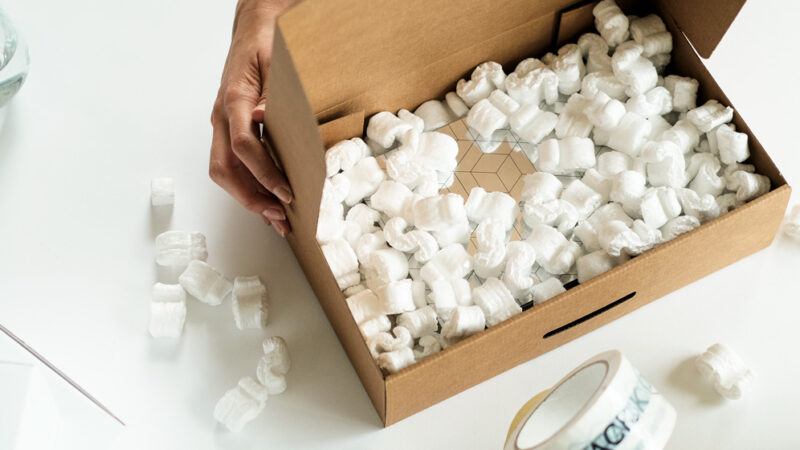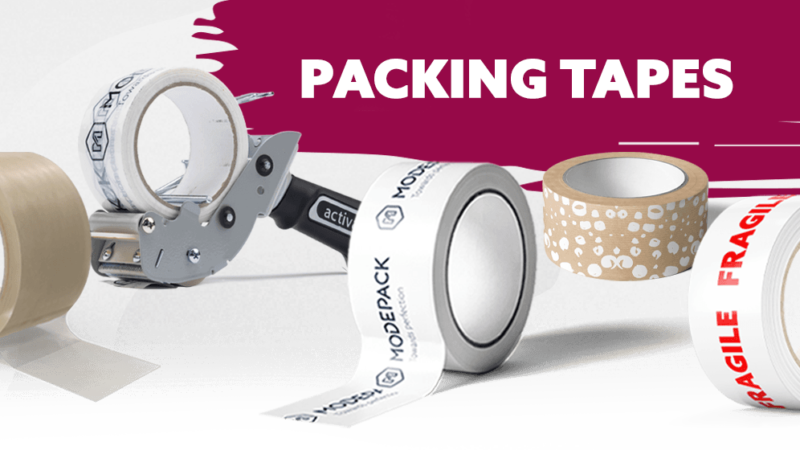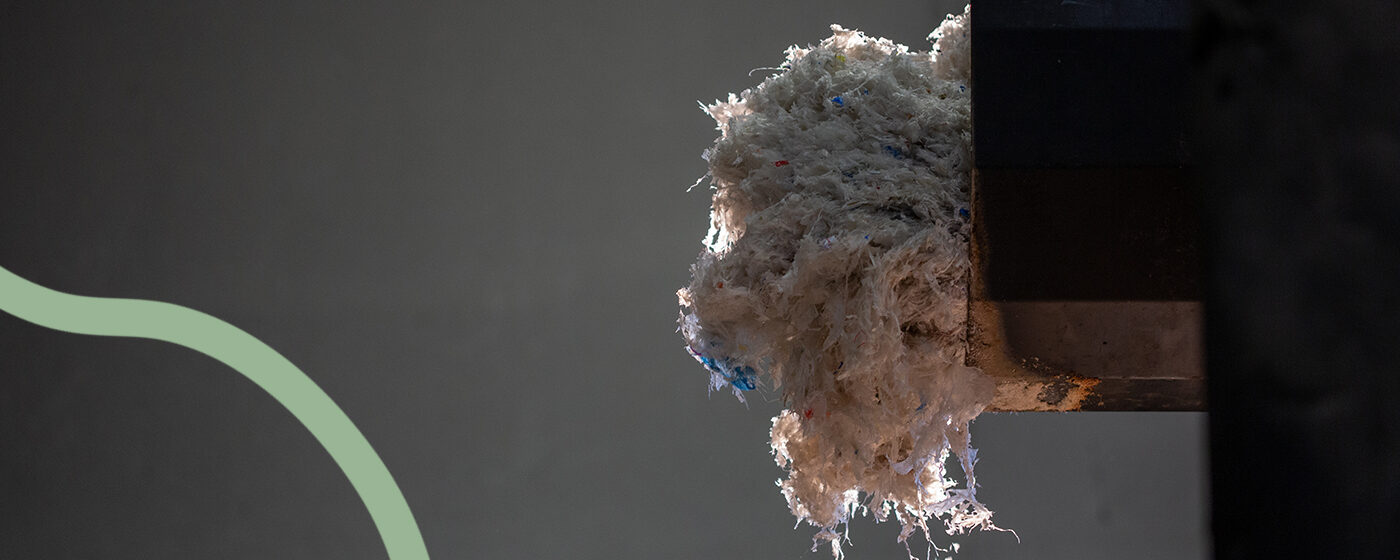
Compostable, biodegradable, or recyclable – what is the difference?
As the concern for the world’s waste problem is rising year after year, countries and governments across the globe are imposing new regulations to prevent the use of plastic, reducing the rising waste problem. So manufacturers offered solutions in the form of “biodegradable”, “compostable”, and “recyclable “materials. And they were a hit! Soon, markets were flooded with biodegradable plastic bags and compostable products, and recyclable signs started appearing everywhere. Sounds like one step closer to the solution? Well, not really.
Even though consumers worldwide are widely using it, the terminology of these materials is often misused and misunderstood. For example, the terms “biodegradable “and “compostable “have been used interchangeably despite being vastly different. Without understanding and knowledge of the issue, people will continue to be confused and dispose of these materials inappropriately. And that is not a scenario that will reduce the global waste problem. To fix that, we must first understand the differences between these terms.
Biodegradable
Biodegradable is the most popular and the most misused term. It often creates confusion because being biodegradable doesn’t mean it is also compostable or recyclable. Then what does biodegradable means? Well, the term isn’t exact in itself, though. In short, we commonly produce biodegradable products with renewable raw materials, microorganisms, petrochemicals, or combinations of all three. And under the right temperature and humidity conditions, they will break down into smaller parts after disposal. It sounds like composting, but it’s not.
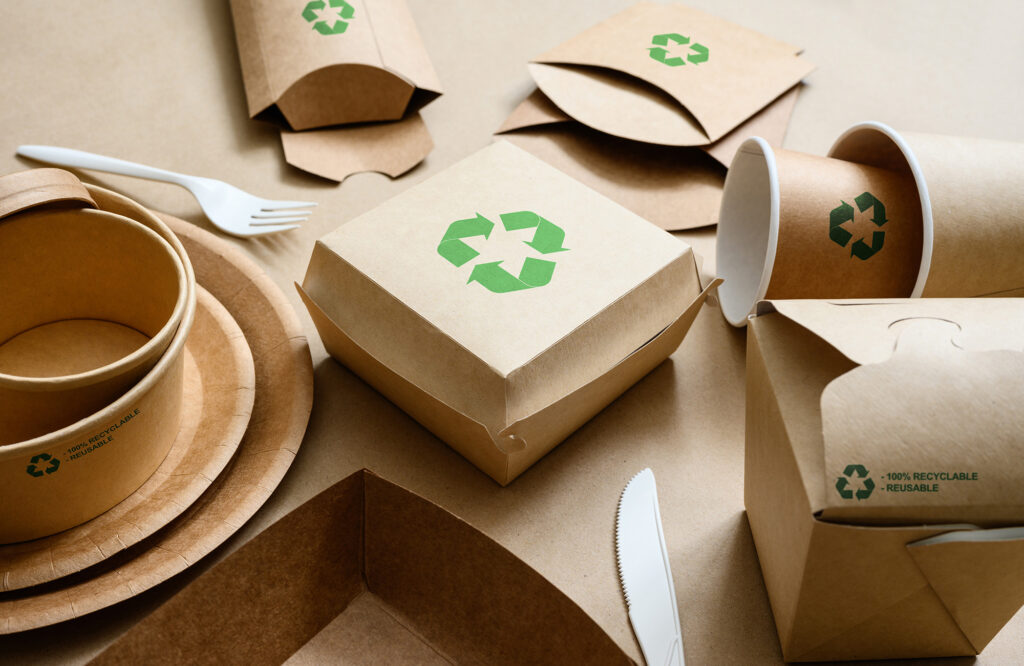
The main reason is that when something is biodegrading, it is breaking down into smaller pieces and not providing back to the environment with nutrients, which would be the case with compost. For example, as they break down, biodegradable plastic bags turn into smaller pieces of plastic that can still be dangerous to the environment and may produce harmful greenhouse gases when left to decompose.
Also, unlike compostable materials, biodegradable materials don’t have a set time frame in which they will decompose. For some, it may take years and years to break down properly. For example, a coffee cup takes 30 years to break down, while it takes only 1 month for an apple to do so. And both can be called biodegradable.
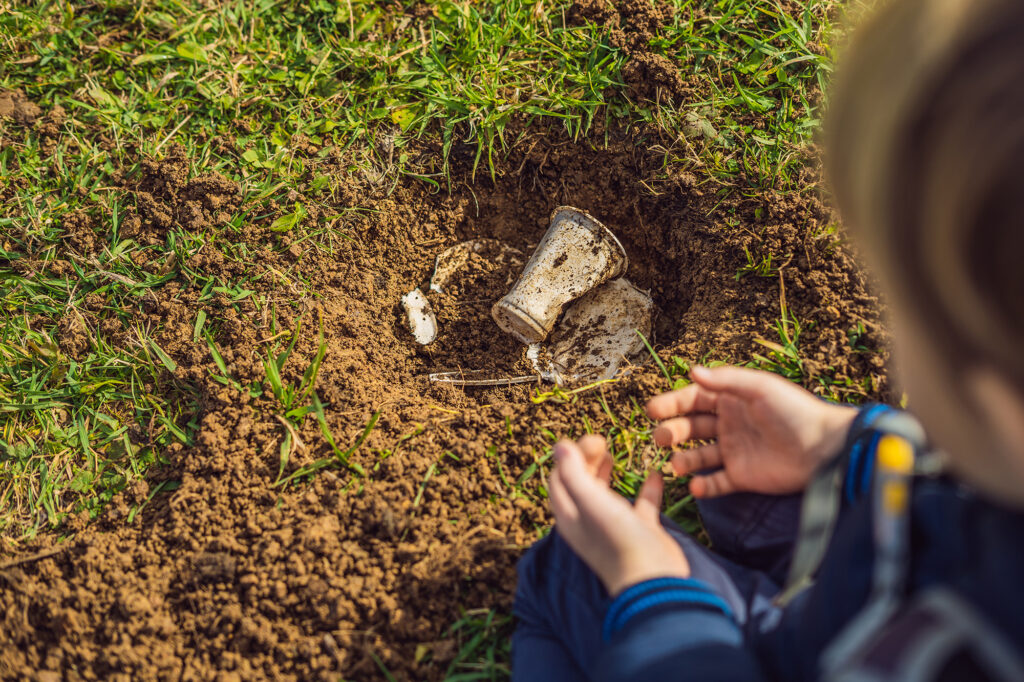
To add to the confusion, biodegradable materials can only break down under intense heat. Hence, they are unsuitable for food waste recycling bins or your home compost. Though they look like “normal” plastic, they are of a different chemical composition, so don’t put them into your recyclable bin. We should dispose of them with other non-recyclables in the general waste bin.
Key takeaways for biodegradable:
- More environmentally-friendly solution than their traditional counterparts, which may take thousands of years to break down
- We should not use it for composting as it can leave harmful oils and gases as it degrades
- It may take anywhere from weeks to decades for it to break down
- Dispose of it with the rest of the non-recyclable waste
Compostable
For a material to be compostable, it needs to be made up of organic elements or plants, which will break down entirely in under 12 weeks and enhance soil quality. Unlike biodegradable materials, it won’t leave any harmful components, and the microbial process that turns organic materials into compost can help to reduce waste pilling in our landfills.

Compost is a great way to add rich nutrients to your garden bed and give your veggies an organic boost. It can also help revitalize and filter local water sources and control erosion by acting like a sponge that allows more water to enter the ground. Also, in the long run, it can lower waste management costs, as storing and disposing of litter is getting ever more expensive.
But before you toss a compostable coffee cup into your compost, check the fine print first. Composting is a controlled process that usually happens in an industrial composting facility, and compostable products are only suitable for home composting if certified as Home Compostable. Industrial facilities have the optimal conditions for composting because they regulate the moisture, temperature, and airflow within the facility to ensure the compostable item breaks down. So, it is essential to check with your local council if you can dispose of compostable products in food waste bins.
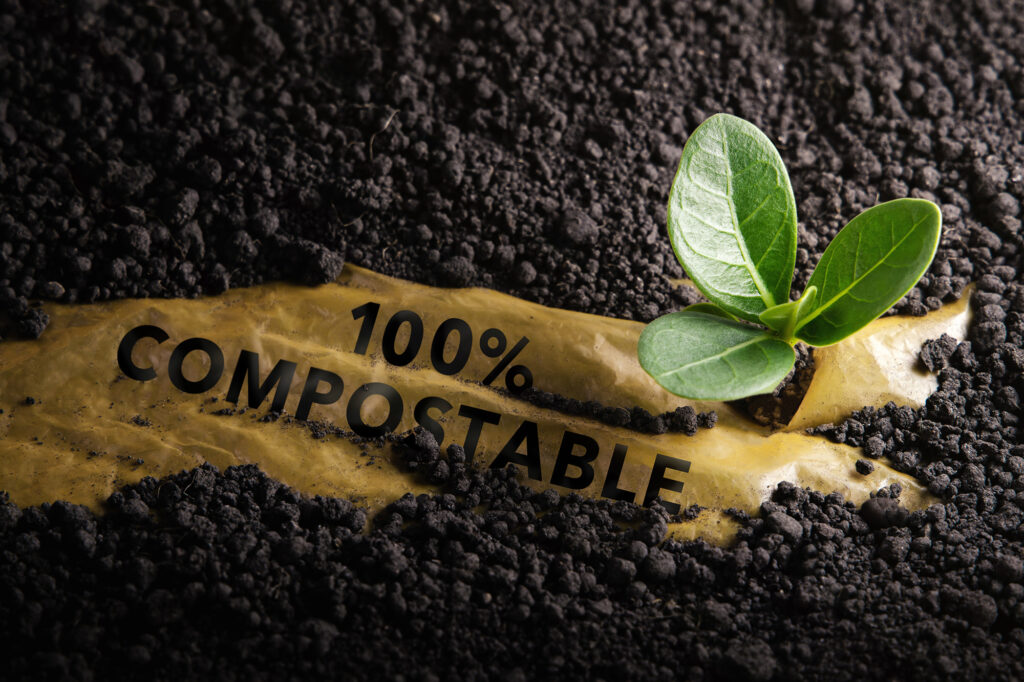
Like biodegradable products, compostable materials should not be put into recycling bins even if they look like “normal “plastic, as they can disrupt the recycling process and damage the whole batch. We should dispose of them through organic waste bins where allowed or with general non-recyclable waste.
Key takeaways for compostable:
- An environmentally friendly solution that breaks down within 180 days
- Depending on the type, it’s fully compostable in industrial or home composting processes
- It enriches the soil with nutrients, controlling erosion and revitalizing water sources
- It lowers the cost of waste management by not ending up in landfills
Recyclable
Unlike previously mentioned terms, recyclable materials are meant to be reused by converting them into something new, keeping the products away from landfills altogether. While for compostable and biodegradable materials, the story was about how long it will take for them to decompose in the natural environment, for recyclable materials, it’s all about how they can be broken down into their raw materials and repurposed into new products.
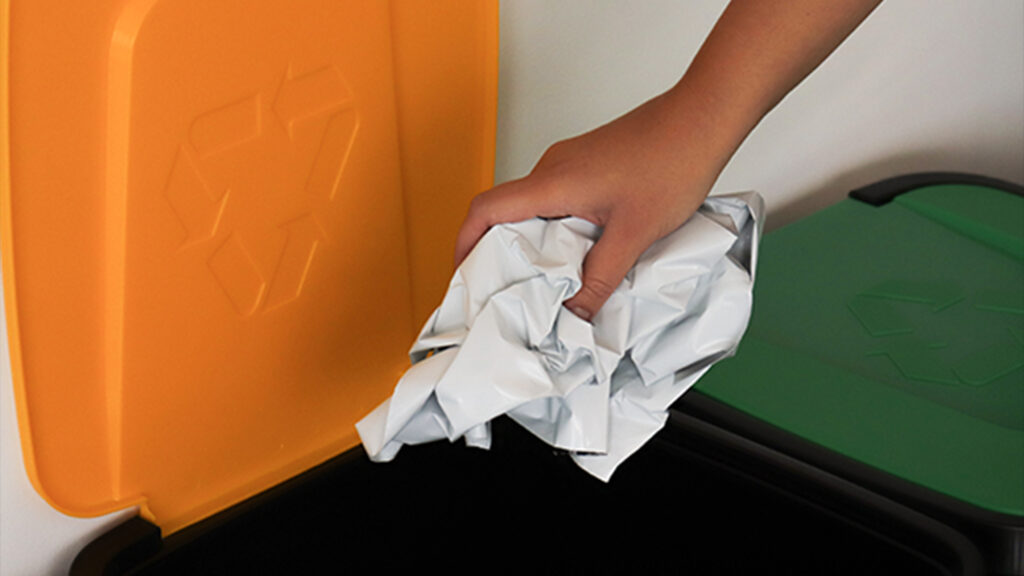
However, not all recyclable materials are made equal. While aluminum, tin, and glass products can be melted down and turned into new products almost indefinitely, we can recycle paper and cardboard around 7 times. After that, the fibers become too short to adhere to each other and can’t be recycled again. For plastic, it takes about 10 times before component parts lose their integrity.
While recycling glass, metal, and paper can be pretty straightforward, when it comes to plastic, the matter is more complicated, both on the user and recycling industry part. There are 7 different types of plastic packaging, and while some are commonly recycled, others are almost never. So, products that are made out of PET (1), HDPE (2), and PP (5) are almost always recycled, and they make a majority of materials that end up in recycling facilities. On the other side, products marked with PVC (3), PS (6), and Other (7) are almost never recycled, while we can sometimes reuse PP (5) and LDPE (4).
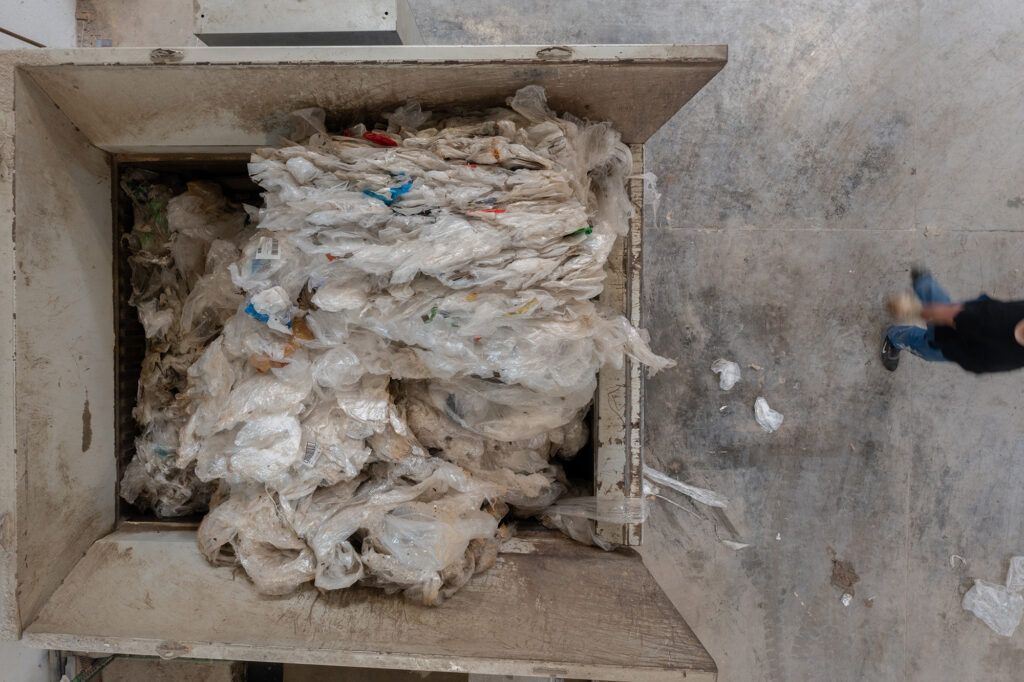
For these products to be effective and good for the environment, all recyclable materials must first make it into the recycling system through curbside collections or specialist drop-off points such as recycling yards. Suppose they are discarded as litter or disposed of as general waste. In that case, the recycling materials lose their power and appeal and become just as harmful as single-use items.
Key takeaways for recyclables:
- It is meant to be reused and converted into new products, keeping it away from the landfill
- Depending on the type of the material, we can recycle it anywhere from 7 to endless amounts of times
- There are 7 types of plastic, and only some can be recycled
- Plastics that we cannot recycle should be disposed of with the rest of the non-recyclable general waste
Conclusion
After diving into definitions of each of these terms, it is understandable why most people need clarification about the difference. But it is vitally important to understand them. The key takeaway is that all compostable materials are biodegradable, but biodegradable materials are not compostable. Also, not all recyclable materials are made equal. And depending on their type, they are either part of the solution or part of the problem, as they end up in landfills.
The debate about which packaging (biodegradable, compostable, or recyclable) is best for the environment is ongoing, and there is no single answer to this question. With modern technologies, the recycling process has advanced to the point where it is a strong contender for, currently, the best option. But as all of these materials have their benefits and limitations, there are many more steps forward in finding sustainable alternatives to standard packaging.
Are you searching for sustainable packaging solutions? Get in touch!


